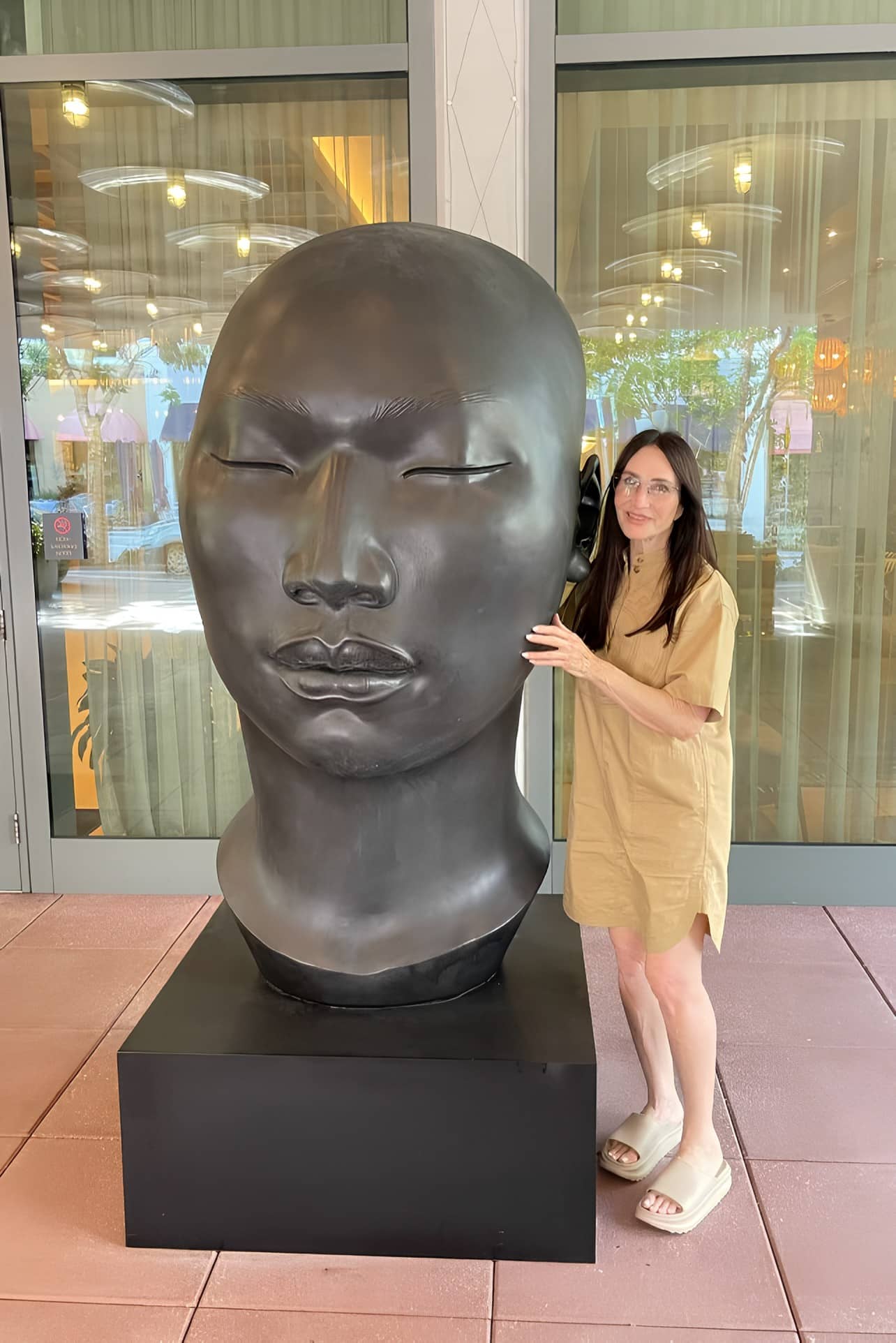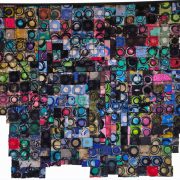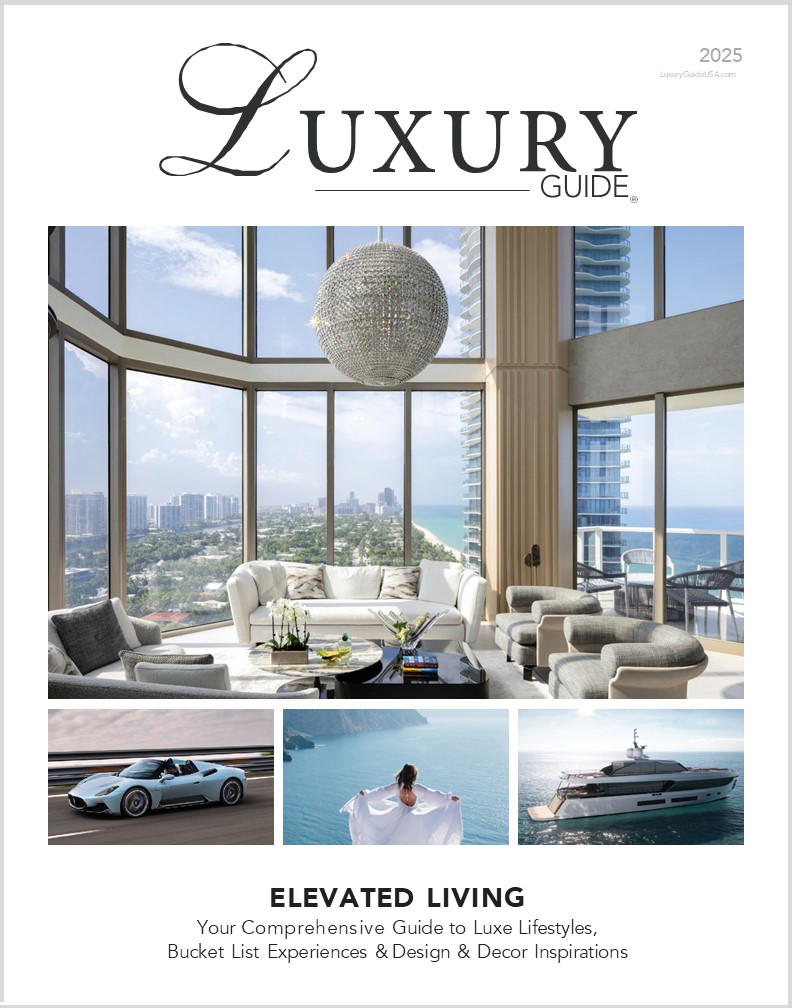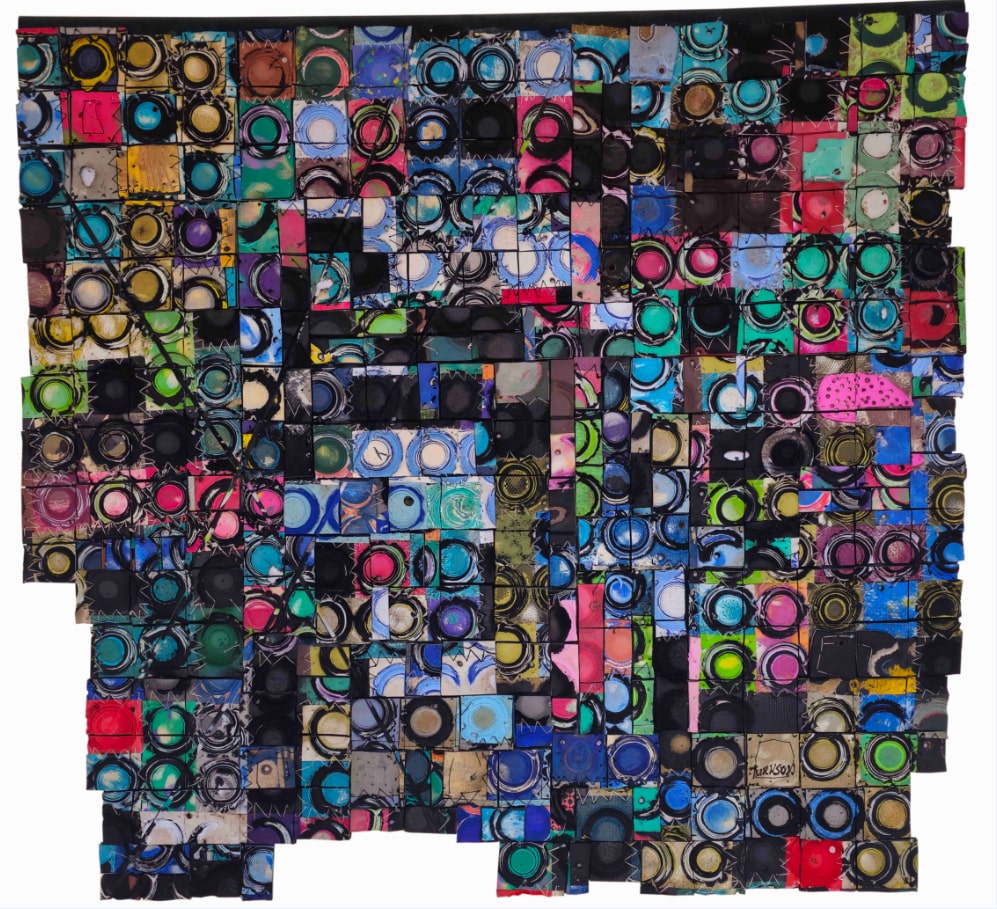Sponder Gallery: A Miami Art Fair Spotlight on Timeless Mastery and Innovation with a Florida Gallery.


As we approach the 2024 Miami Art Fair Sponder Gallery of Boca Raton brings a curated selection of esteemed artists, embodying the gallery’s commitment to timeless artistic dialogue, innovation, and diverse creative expression.
In its latest presentation, Sponder Gallery showcases a compelling mix of historical and contemporary works, seamlessly bridging artistic epochs and aesthetics. Through an array of distinguished artists, from celebrated estates to living creators, this exhibition underscores the gallery’s role in championing art that resonates beyond the immediate, tapping into cultural legacy and progressive narratives alike.
The roster includes significant figures such as Doug Argue, Stanley Boxer, and Lynn Chadwick, who anchor the exhibition with foundational modernist practices that continue to influence generations. Their work, alongside mid-century masters like Dan Christensen, Max-Steven Grossman, and Donald Martiny, represents a period of rigorous experimentation and abstraction, setting the tone for much of today’s artistic exploration.
Gino Miles and James Austin Murray contribute to this legacy with sculptures that command spatial dynamics and reflect on the human form and its abstractions, while Patrick Tagoe Turkson and Isabelle van Zeijl extend this conversation through contemporary interpretations and philosophical depth.
Notably, Sponder Gallery will also present for the first time, the works by Scarlett Kanustanaux, an artist whose work reflects a keen awareness of both cultural lineage and the evolving role of art in today’s society. Kanustanaux’s sculptures and mixed-media works often evoke Buddhist meditation, linking traditional practices with modern materiality, offering viewers a meditative encounter and grounding the exhibition in a discourse of spiritual and ecological awareness. Sponder Gallery’s selection illustrates not only the gallery’s seasoned eye for historical significance but also its dedication to forward-looking innovation, which has made it a cornerstone of the Boca Raton and broader art community. With an emphasis on both established estates and artists actively pushing boundaries,
Sponder Gallery’s participation in the Miami Art Fair promises to be an unforgettable experience, resonating with collectors, art historians, and enthusiasts alike. This exhibition not only showcases notable names but affirms Sponder Gallery’s ongoing role as a steward of diverse and dynamic artistic expressions, making it a truly evergreen and newsworthy addition to the Miami Art Fair’s landscape.
Two artists worthy of academia exploration for this year’s Art Basel season include: Patrick Tagoe Turkson and Scarlett Kanistanaux.
Patrick Tagoe Turkson, a Ghanaian multidisciplinary artist based in Takoradi, engages in a unique and socially resonant practice that repurposes discarded flip-flops and plastics found on Ghana’s southern Atlantic coast. With an MFA from the Kwame Nkrumah University of Science and Technology, Turkson merges art and environmental activism, transforming waste into visually stunning, culturally rich wall hangings that resonate with themes of memory, migration, and adaptation.
In his flip-flop wall-hanging series, Turkson recontextualizes these everyday objects, presenting them as “Objects of Value.” The artist’s approach draws parallels with traditional Ghanaian textile arts, such as Kente weaving, creating complex, patterned compositions that speak to continuity and change within cultural traditions. His vibrant, kaleidoscopic assemblages transform the mundane into mesmerizing forms, each piece embodying a narrative of recovery and resilience. Turkson’s work challenges conventional perceptions of discarded materials, emphasizing their potential for beauty and storytelling. His process reflects a deep commitment to sustainability, and he positions himself as an archivist of cultural memory, an environmentalist, and a storyteller whose art serves as both a medium of aesthetic pleasure and a conduit for social commentary.
Beyond his studio practice, Turkson serves as a Senior Lecturer at Takoradi Technical University, where he contributes to shaping the next generation of Ghanaian artists. He also directs Aesthete Ghana, organizing nature art workshops and exhibitions that promote sustainability through art. His works are held in notable collections, including the Royal Ontario Museum in Canada and the Casoria Contemporary Art Museum in Italy, testifying to his global influence and commitment to redefining art’s role within environmental and cultural dialogues.
Patrick Tagoe Turkson’s 403 Soobolo 2 (2024) is a compelling assemblage that invites rigorous examination of material culture and the socio-environmental implications of contemporary art practices. Measuring 49 by 46 inches, this piece is constructed from found flip-flops meticulously arranged on suede, a choice that situates Turkson within a lineage of artists who engage with reclaimed materials to critique consumerism, transnational waste flows, and the ecological toll of globalized economies. The work’s intricate patchwork structure transforms detritus into a carefully ordered visual lexicon, where each fragment of rubber contributes to an overarching mosaic, resonant with both aesthetic and cultural significance.
In 403 Soobolo 2, Turkson harnesses the personal histories embedded within these worn, discarded objects, each flip-flop bearing traces of movement, environment, and use. This material speaks to a broader narrative of transience and resilience, as these cast-off items—often associated with the marginalized and transient—are elevated within the institutional frame of contemporary art. The artist’s meticulous process of cutting, organizing, and stitching together individual fragments recalls traditional craft methodologies, while simultaneously advancing a discourse on postcolonial identity, where overlooked or undervalued resources are recuperated and honored.
This work aligns with ecological art movements, yet Turkson’s approach transcends mere environmental advocacy, entering a realm of social and political commentary on disposability, migration, and the lived experiences of global communities. By integrating these everyday remnants, 403 Soobolo 2 challenges viewers to reconsider notions of value, beauty, and permanence, compelling us to reflect on the life cycles of material objects and, by extension, the societies that produce them. In doing so, Turkson’s work not only critiques, but also celebrates, the resilience and agency embedded within these reclaimed materials, underscoring art’s potential to reframe our understanding of waste and worth.
Scarlett Kanistanaux, a sculptor from Erie, Colorado, creates deeply contemplative ceramic and bronze portraits that reflect the spiritual poise of monastic life. Drawing on Buddhist traditions, her work channels themes of compassion, introspection, and healing through serene depictions of young monks and nuns. While she once achieved recognition in athletics, her sculptures now reveal a profound connection to spiritual expression and artistic form.
Kanistanaux’s artistic path represents a significant shift from her previous role as a billboard painter to a focus on what she calls “sacred art.” Her minimalist, evocative sculptures embody timeless virtues such as compassion and forgiveness, intended to move viewers to reflection and peace. These works, acclaimed for their quiet power, are housed in notable collections worldwide, appealing to those who seek universal connection and tranquility.
Rather than replicating Eastern cultural symbols, Kanistanaux aims to capture a universal essence of spiritual calm that resonates across backgrounds. Her work transcends cultural boundaries, inviting viewers to connect with values like inner peace and compassion. Through her art, she offers collectors an experience that fosters contemplation and connects to a broader, shared human spirit.
In examining Scarlett Kanistanaux’s sculptural practice, one is drawn to her profound alignment with Buddhist ideals and techniques, which she channels through the tangible medium of clay and bronze. Her sculptures of monks and nuns, robed in timeless simplicity, evoke not only aesthetic reverence but also a deeply contemplative presence, embodying the enduring values of compassion, loving-kindness, and acceptance. Kanistanaux’s creative journey raises intriguing questions: How does her work, rooted in ancient tradition yet crafted in contemporary Colorado, bridge cultural and temporal divides? What drives her dedication to these forms as a life calling, an act of both personal healing and spiritual resonance?
Kanistanaux recounts that her purpose emerged in adolescence through a “soft inner voice” guiding her toward sculpture—a voice that persisted throughout her life until midlife when she fully embraced this artistic path. Her chosen method of coil-building clay vessels “from the inside out” is noteworthy for its symbolic depth, as she shapes each piece to convey a “subtle vibrancy” that seems to touch viewers on a spiritual level. This vibrancy, intriguingly, persists even in her bronze sculptures, which often lose the organic qualities of their clay origins.
The artist’s practice is further marked by two fortuitous encounters with Buddhist monks, each culminating in a ceremonial blessing upon her sculptures and hands. These interactions—one with an elder Japanese monk in her rural studio and the other with Sri Lankan monks at Naropa University—served as powerful affirmations of her work’s spiritual authenticity. Kanistanaux’s reflections prompt an exploration of the role such blessings play in both the artistic process and the viewer’s experience. Do these blessings imbue her sculptures with an intangible resonance that transcends their material form?
Scarlett Kanistanaux’s Stillness, edition AP (2024), is a significant work within the continuum of Buddhist-inspired sculptural practices, invoking the meditative presence characteristic of historical Buddhist sculpture. Standing at 70 x 37 x 40 inches, this bronze head, with its minimalist features and closed eyes, reflects a lineage of serene figures commonly associated with the peaceful countenances of Buddhist monks and nuns throughout art history. The calm expression, devoid of individual identity markers, evokes the ideal of equanimity central to Buddhist thought, emphasizing an internal stillness that transcends the physical world.
Kanistanaux’s sculptural technique—polishing the bronze to a smooth, reflective surface—aligns with the meditative purposes of historical Buddhist sculptures, which were designed not only as devotional objects but also as aids in contemplation. The reflective surface invites viewers to see themselves in the artwork, paralleling the Buddhist practice of introspection and self-awareness. Historically, Buddhist sculptures from regions such as China, Japan, and Southeast Asia emphasized a similar universality in facial features, using symmetry and simplified forms to convey the ideals of spiritual harmony and enlightenment rather than individual identity. Kanistanaux taps into this tradition, suggesting a timeless, meditative state that resonates beyond cultural boundaries.
In terms of scale, Stillness assumes an imposing, almost divine stature, much like the grand Buddha statues found in historical temples, which were scaled to inspire reverence and evoke a sense of humility in their viewers. Kanistanaux’s work mirrors this approach, allowing the sculpture to command both physical and psychological space, encouraging an immersive experience that places the viewer in direct dialogue with concepts of presence, silence, and mindfulness.
Through this contemporary reimagining of Buddhist-inspired forms, Kanistanaux bridges historical devotional art with modern sculptural language, positioning Stillness not merely as an object to be viewed but as a meditative instrument. Her work thus engages viewers in an aesthetic and spiritual encounter, subtly directing them toward the Buddhist notion of “stilling the mind”—a practice essential for achieving enlightenment and inner peace. In this way, Kanistanaux continues a profound art historical lineage, reinvigorating it with modern materials and techniques while staying faithful to the introspective ideals that have historically animated Buddhist sculpture.
Sponder Gallery’s showcase at Art Miami 2024 encapsulates an extraordinary intersection of legacy and innovation, offering a profound visual journey that transcends mere aesthetics. By presenting artists like Jules Olikski with Patrick Tagoe-Turkson and Scarlett Kanistanaux—who infuse traditional themes with contemporary relevance—the gallery not only honors historical artistic lineages but also breathes fresh life into these narratives. This commitment to curating thought-provoking works makes Sponder Gallery a pivotal presence at Art Miami, where viewers are invited to experience the dialogue between past and present, and between global and personal realms.
For art historians, collectors, and enthusiasts, Sponder Gallery’s exhibition is a rare opportunity to engage with pieces that are not only visually captivating but also intellectually and spiritually resonant. The gallery’s selection celebrates the depth and diversity of artistic expression, embracing both the material beauty and the deeper messages conveyed by each work. By visiting Sponder Gallery, you’re not only witnessing masterful artistry but partaking in an exploration of art’s enduring power to connect us across time and culture, an essential stop for those who appreciate the transformative potential of art in today’s ever-evolving world.
For more information on Sponder Gallery visit www.spondergallery.com. For more information on Art Miami 2024, visit www.artmiami.com Art Miami 2024 runs from Dec 3 – Dec 8, 2024.






